Sweet Potatoes: Growing, Starting Slips, Rooting And Nurturing With Andrew Hock

VEGETABLES > POTATOES > SWEET

Elizabeth is a Permaculture Garden Designer, Sustainability Consultant and Professional Writer, working as an advocate for positive change. She graduated from the University of St. Andrews with an MA in English and Philosophy and obtained a Diploma in Applied Permaculture Design from the Permaculture Association.
Reviewed By DAN ORI

Dan has over 27 years’ under his belt caring for plants and gardens. Working as a Horticultural Instructor and Consultant, he draws on a diverse range of experience that includes working as a Head Gardener, Tree Surgeon, Garden Centre Trouble Shooter, and writer of academic papers. Dan has a Level 3 Diploma in Horticulture and is currently a candidate for the RHS’s most prestigious award – The Master of Horticulture.
Contributions From ANDREW HOCK

Andrew Hock, from Tennessee in the USA, is the Founder of the Sweet Potato Society and a gardener with many years of growing experience. His society's mission is dedicated "to the appreciation, cultivation, and celebration of sweet potatoes".
IN THIS GUIDE
Sweet potatoes always need a long growing season, which can potentially make them a little more challenging to grow in the UK than a range of other common crops.
However, if you choose the right variety, grow them in an appropriate place and provide them with the right care, then it is possible to achieve abundant harvests of sweet potatoes at home.
In this guide, we’ve teamed up with Andrew Hock, the Founder of The Sweet Potato Society.
Andrew has many years of experience gardening and has a personal love of sweet potatoes.
“Not only are they a beautiful plant to grow with lush and verdant foliage, but they are also a nutritional powerhouse,” says Andrew, when explaining why he is so passionate about these root vegetables.
“The process of growing, starting slips, rooting and nurturing them until planting and then waiting months for the harvest and curing is a rewarding exercise of dedication and patience.”
Overview
| Botanical Name | Ipomoea batatas |
| Common Name(s) | Sweet potato |
| Plant Type | Vegetable |
| Native Area | South America |
| Hardiness Rating | H1C |
| Foliage | Deciduous |
| Flowers | Insignificant purple and white blooms |
| When To Plant | May to June |
| Harvesting Months | Late summer to early autumn |
Sunlight
Preferred
Full Sun
Exposure
Sheltered
Size
Height
2.5 – 4M
Spread
1.5 – 2.5M
Bloom Time
Summer
Soil
Preferred
Loam or sand
Moisture
Moist but well-drained
pH
Any
Sweet potatoes, Ipomoea batatas, are vining plants with tuberous roots.
This crop also produces leaves and young shoots as an additional yield, which potentially makes this an extremely productive plant to grow in your garden.
Sweet potatoes can, in the right setting, grow like weeds.

In fact, they are related to bindweeds, as they are also members of the Convolvulaceae plant family.1Broyles, S. (2012, November 15). In a Bind with Convolvulaceae. Whiteknights Biodiversity. Retrieved March 30, 2023, from https://blogs.reading.ac.uk/whiteknightsbiodiversity/2012/11/15/bindweed/
However, it is important to remember that this plant is native to tropical climes and loves as much heat and as long a summer as possible, which is why we are often reliant on a good summer when growing them here in the UK.
You can also grow sweet potatoes in a polytunnel, greenhouse or under cloche protection to see the best results here in the British Isles.
How To Grow Sweet Potatoes
“Rainy climates with shorter summers are a challenge for this type of crop,” warns Andrew.
“Still, if you’re considering growing sweet potatoes, I’d say go for it!
“Even a small yield is satisfying. It’s a very decorative plant, so just having all the pretty foliage is a nice addition to a garden.”
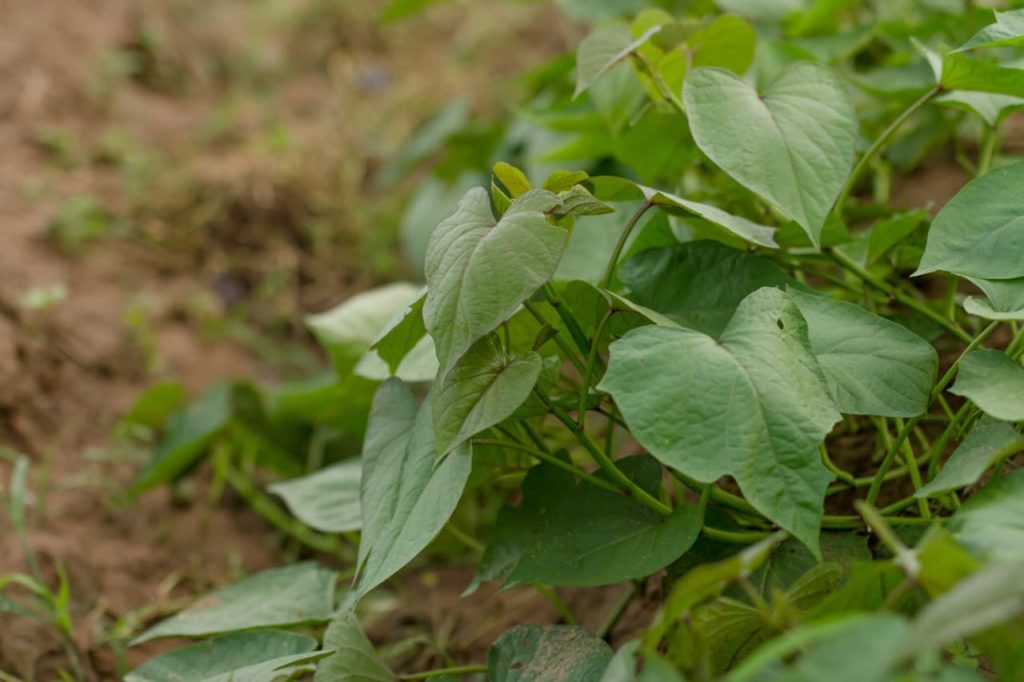
In addition to this, growing sweet potatoes successfully begins with choosing the right variety or varieties for where you live.
It is important to choose one of the varieties that has been specifically formulated for growing in the UK and that is suited to the growing conditions that gardeners in the UK can typically provide.
Common Varieties
Some common and well-regarded sweet potato varieties grown in the UK include:
- ‘Beauregard Improved’
- ‘Bonita’
- ‘Evangeline’
- ‘Kaukura’
- ‘Tahiti’
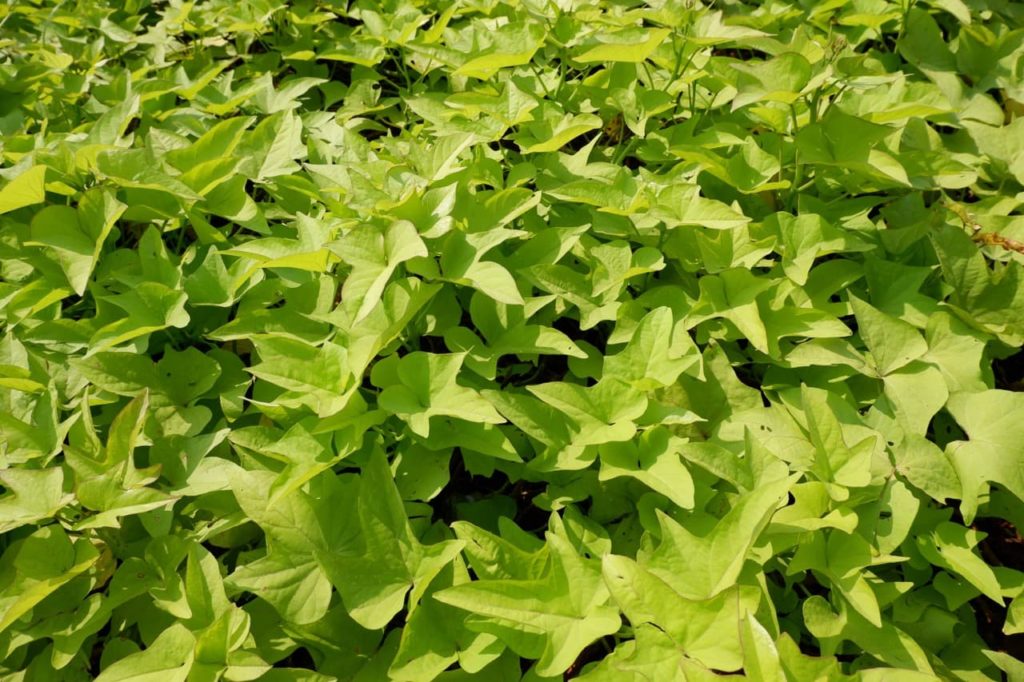
Sweet potatoes may not be the easiest of crops to grow in our climate, but choosing one of the above (or another variety suited to UK cultivation) will lead to a much higher chance of a successful harvest.
When To Grow Sweet Potatoes
Sweet potatoes are typically not grown from seed but from either unrooted or rooted cuttings (plug plants).
The unrooted cuttings are known as sweet potato slips.
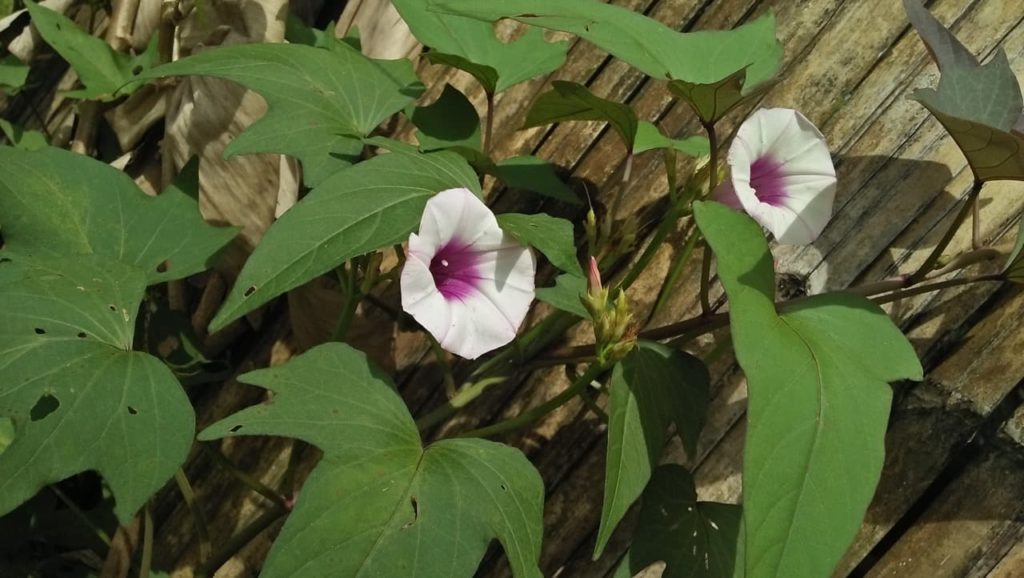
Both of these are typically available from garden centres and plant nurseries from around late April onwards.
They should be planted up into pots inside as soon as they are purchased, but will not be planted into their final growing positions until there is absolutely no risk of frost.
Sweet Potato Slips
Sweet potato slips, as mentioned above, are the unrooted cuttings from a sweet potato plant.
They should be potted up into any good peat-free multipurpose potting mix.
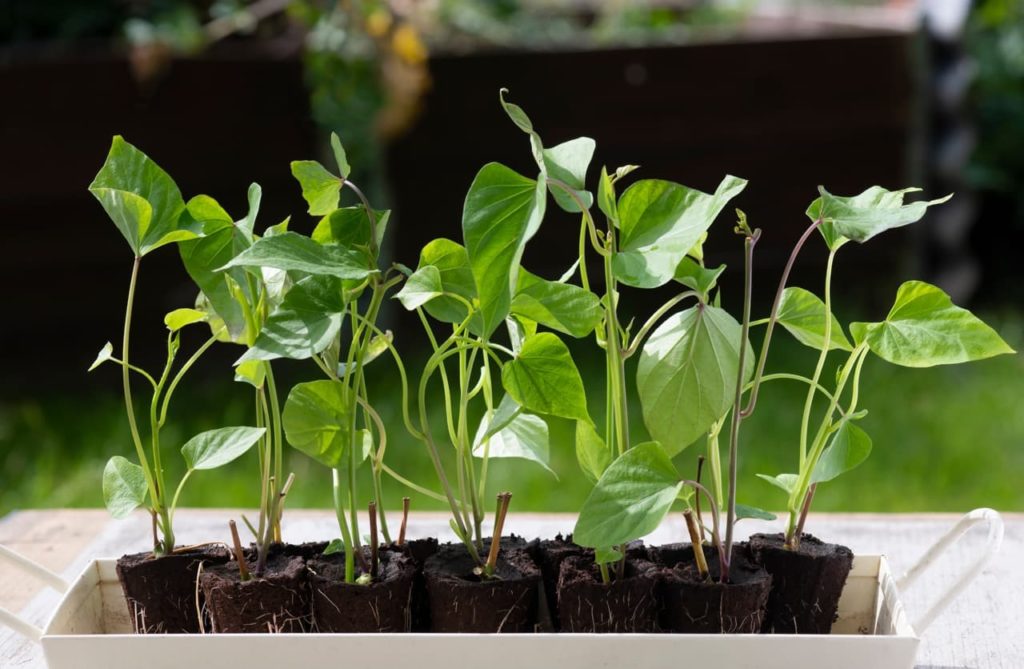
You might be able to gather your own sweet potato slips if you successfully manage to store tubers previously grown in your garden until the spring.
They are best kept covered with clear plastic in a sunny, warm spot or kept inside a heated propagator until they root.
Luckily, this will not typically take too long, as they tend to root readily.
“You can easily grow your own slips from a sweet potato,” says Master Horticulturist Dan Ori.
“For pest and disease prevention I recommend buying your first slips. Potatoes from your own harvest can be used to propagate if you are able to store them until spring.”
Planting Guidelines
Remember, sweet potatoes, whether they were purchased as plug plants or as slips, should only be planted out into their final growing positions once all risk of frost has passed.
Remember to harden them off before transplantation.
As mentioned above, it can often be easier to grow sweet potatoes in a greenhouse or polytunnel (though this need not be heated).
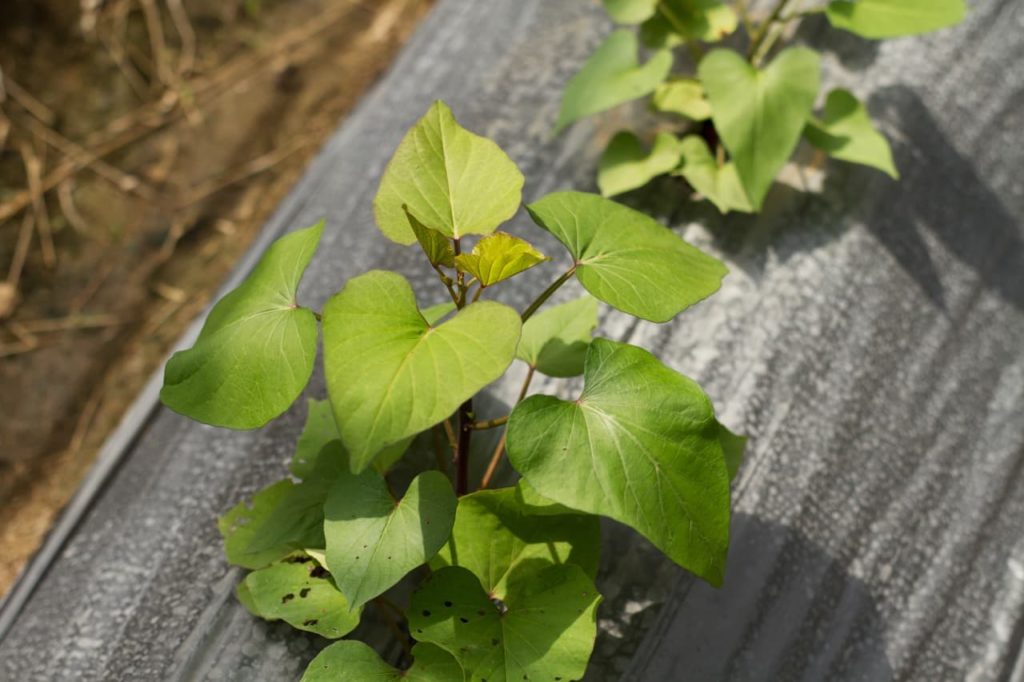
In most areas, some form of cloche protection will be required at the very least when attempting to grow these plants outdoors.
You can plant sweet potatoes in a container or a grow bag, or you can grow sweet potatoes in the ground, as long as the soil and positioning are appropriate.
As a general rule of thumb, plants should be placed around 30cm apart.
Sweet Potato Plant Care
“The most important factors when caring for sweet potato plants are sun, soil and patience,” Andrew says.
“You need a long, warm growing season and good, loose soil.
“Otherwise, once properly established, in my experience, they are fairly worry-free.”
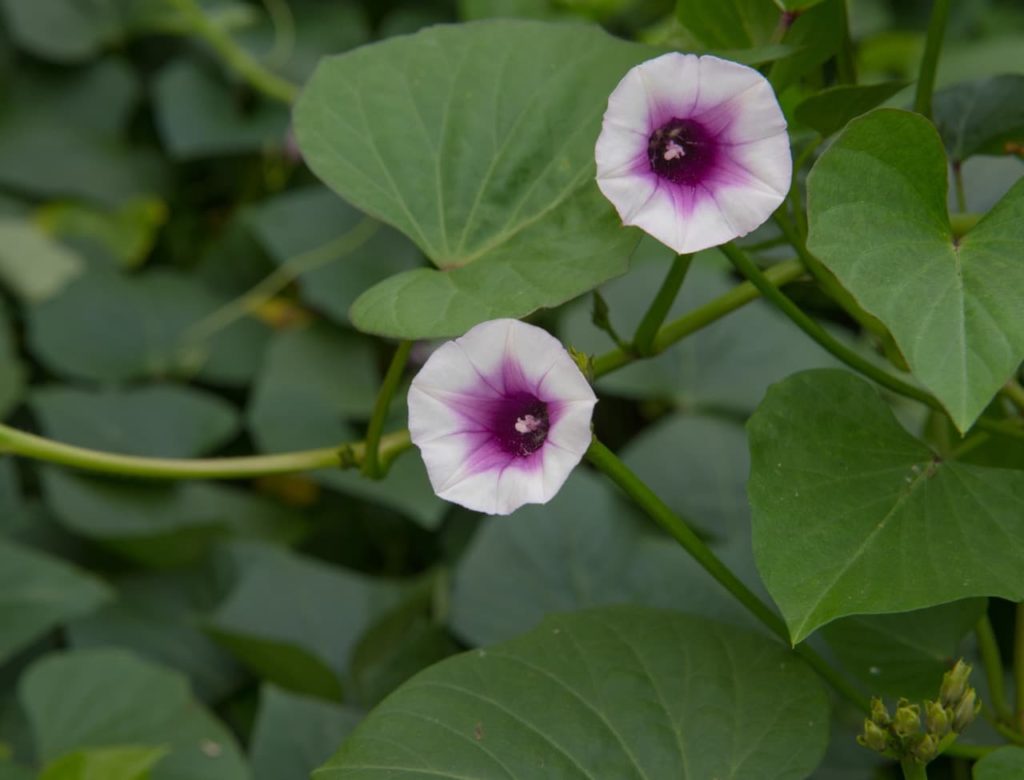
So, if you have a suitable location to grow sweet potatoes, that is a major part of the job completed.
These plants can romp away in the right location and take up a fair amount of space, though vertical growing with supports is an option where space is limited.
However, finding the perfect spot to grow sweet potatoes is extremely important, as without its basic requirements being met, a sweet potato plant can certainly fail to thrive.
Here are the key things to think about when it comes to sweet potato plant care:
Preferred Soil
Sweet potatoes are relatively hungry plants and require a fertile and humus-rich soil or growing medium.
If growing in containers, any good quality peat-free multipurpose compost should work just fine.
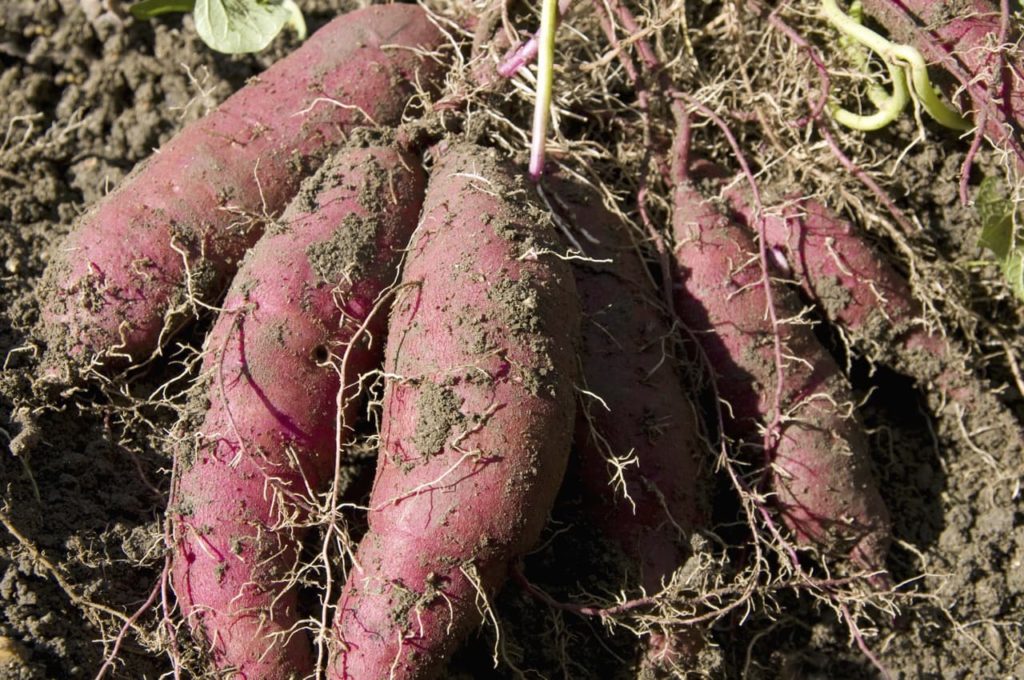
The soil or growing medium should be moisture-retentive yet free draining.
When planting outdoors or in the ground in a greenhouse or polytunnel, it is a good idea to enrich the area before planting by top dressing with plenty of homemade compost or well-rotted manure.
“Growing sweet potatoes in well-rotted manure can work well outside,” shares Dan.
“However, I recommend not using animal manures and concentrated chicken manure fertilisers in greenhouses and polytunnels due to the smell and high ammonia content.
“My alternative to manure is good-quality garden compost and leaf mould with seaweed feed watered on.”
Position & Sunlight
The most important thing when trying to grow sweet potatoes in the UK are the temperatures that you can provide.
Remember, growing in a greenhouse or polytunnel or at least below row covers or cloches can make a big difference to how easy you find the undertaking.
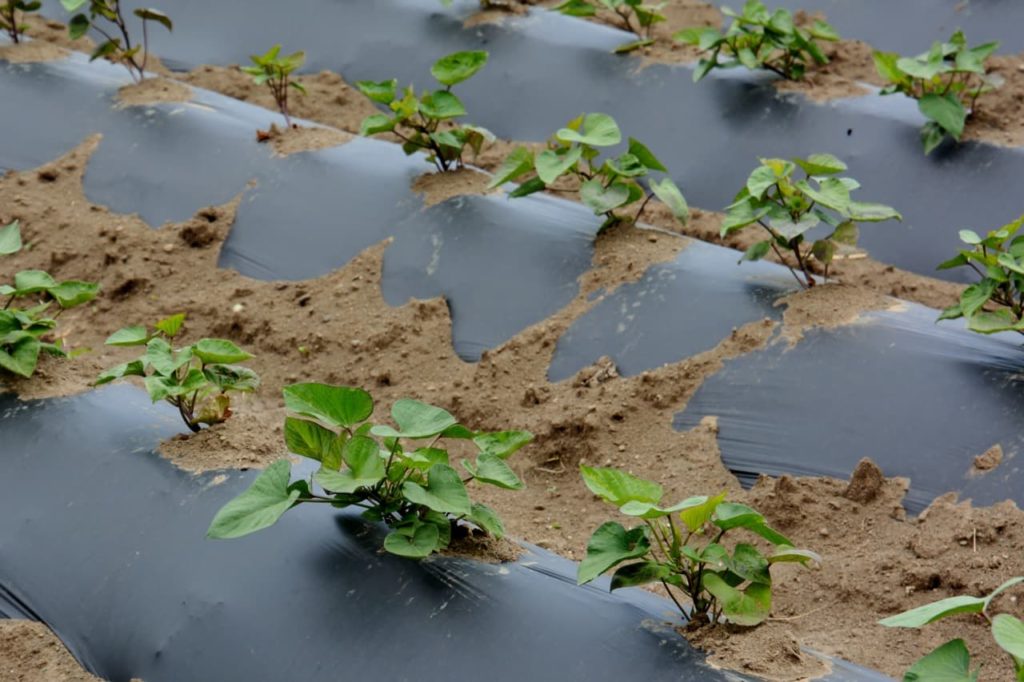
Choose as light, bright, warm and sheltered a spot as possible for the best results.
A sheltered spot close to a south-facing wall might be ideal if growing sweet potatoes outside.
Watering & Feeding
Sweet potatoes need to be kept well watered at all times and it is especially important to think about their water needs when growing them undercover or in containers.
If there is a water shortage, the tubers will not swell up as they should.
Remember, plants in pots will typically dry out more quickly than those in the ground.
However, even those growing in the ground outdoors will need to be watered or irrigated properly during any dry spells in summer.
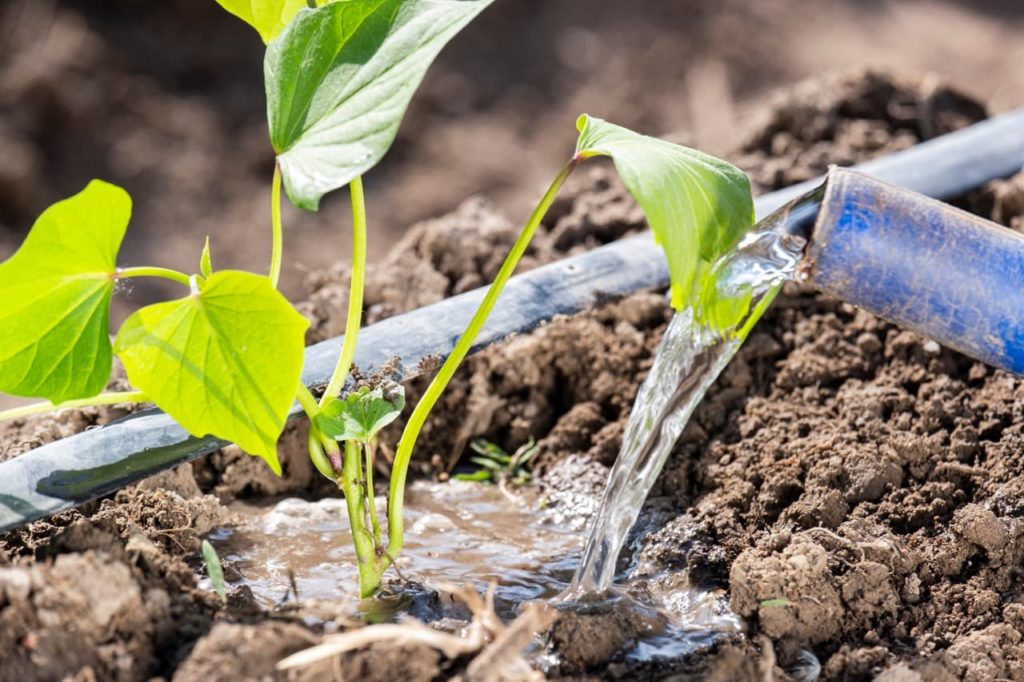
Mulching the plants after you have placed them in the ground or in containers with a layer of homemade compost or other organic material won’t just help to suppress weeds and retain moisture.
It will also provide slow-release fertility for these hungry plants.
Sweet potatoes growing in the ground typically won’t require any other feeding as long as there are sufficient nutrients in the soil.
However, those in containers can benefit from the provision of a high-potassium organic liquid plant feed on a fortnightly basis throughout the summer months.
Common Problems
Sweet potato problems most commonly arise from trying to grow them in too cool or unsuitable a location.
Low temperatures, exposure and water problems are far more likely to cause problems than pests or diseases, which is why it is so important to grow these plants in the right place.
However, when growing sweet potatoes undercover you may well encounter common greenhouse pests such as whitefly or red spider mites.
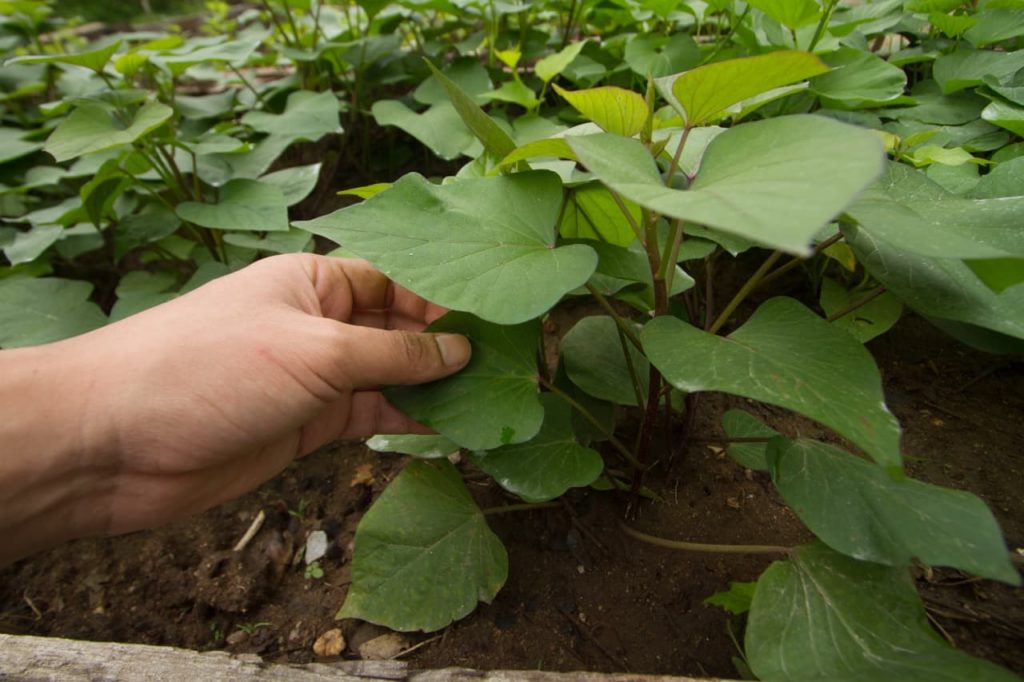
“The tender young leaves of baby plants are like candy to bunnies and groundhogs, so if they are around you’ll need to protect your young plants with some fencing or deterrent,” warns Andrew.
“Once the plants are established though, the leaves are mostly safe.
“Rodents will sometimes eat your tubers from underground, and you won’t even know until it’s too late!
“Remedy this with deterrents and traps.”
A Note On Growing Alongside Regular Potatoes
“It’s a common misconception that sweet potatoes are similar to their named counterpart – sweet potatoes are actually an entirely different species than regular potatoes,” Andrew explains.
“Potatoes are in the nightshade family and sweet potatoes are actually in the Morning Glory family.
“You’ll notice this if your vines flower, as the flowers are almost identical to morning glories and are very beautiful and delicate!
“While my experience growing regular potatoes is limited, I do know they take less time and are somewhat more susceptible to rot since the skins are more delicate.
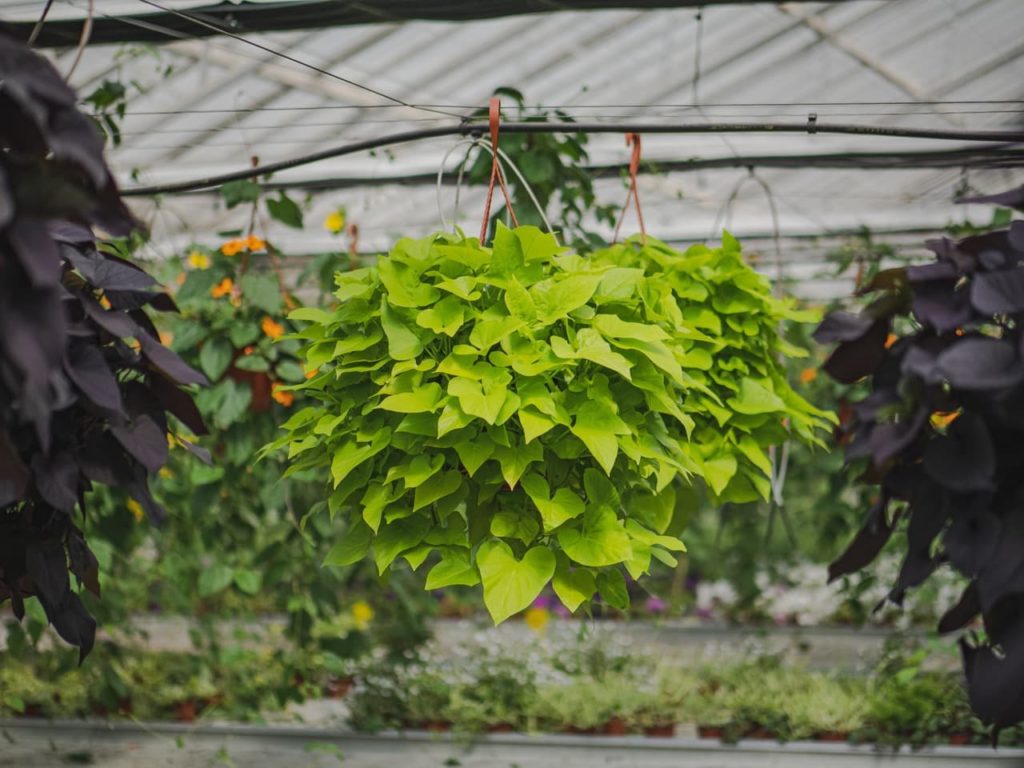
Sweet potatoes and regular potatoes are not ideal companions because they will be overly competitive for space and resources such as water and nutrients in the soil.
Instead, I would recommend you grow sweet potatoes near nitrogen-fixing legumes to help meet their nutrient needs and with radishes, spinach and alliums to take up the space around sprawling sweet potato plants.
These plants will also not shade them too much or become overly competitive.
References
- 1Broyles, S. (2012, November 15). In a Bind with Convolvulaceae. Whiteknights Biodiversity. Retrieved March 30, 2023, from https://blogs.reading.ac.uk/whiteknightsbiodiversity/2012/11/15/bindweed/
